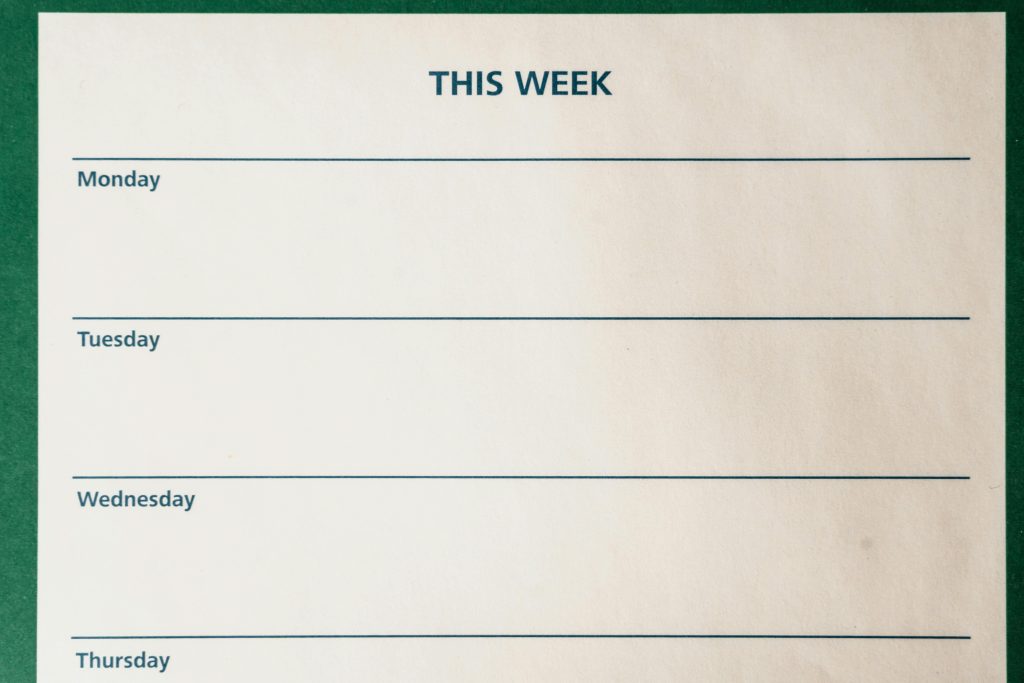You know the feeling. It hits you on a random Tuesday evening. You’re scrolling through your phone, and you see someone who’s incredibly fit, or speaking a new language fluently, or killing it in their career. And a thought pops into your head: “I want that.”
Maybe it’s a desire for more energy. To be calmer and less reactive. To learn that skill you’ve always talked about. To finally feel in control of your time and your life.
So, you get motivated. You dive in headfirst. You buy the journal, download the app, sign up for the gym membership, and declare that tomorrow, Everything Changes.
For a few days, it’s amazing. You’re meditating for twenty minutes, eating salads for every meal, and your Duolingo streak is the envy of all your friends. You feel like a new person.
Then, life happens. A stressful day at work. A bad night’s sleep. A friend’s birthday party. You miss one day. Then two. And before you know it, the journal is gathering dust on your nightstand, and the only thing you’re consistently doing is feeling guilty about what you’re not doing.
What if the problem isn’t you? What if the problem is your strategy?
We’ve been sold a lie about personal growth. We think it’s about monumental willpower, about dramatic overhauls, about turning into a completely different person overnight. It’s not.
Real, lasting change isn’t a sprint. It’s not even a marathon. It’s the art of building a tiny, almost invisible track that gently guides you, day after day, in the right direction. It’s about building a system, not just setting a goal.
And the beautiful secret? A system that sticks isn’t built on discipline. It’s built on kindness, simplicity, and a deep understanding of how you actually work.
Let’s build one together.
Part 1: The Great Mindset Shift – From Grand Gestures to Gentle Guidance

Before we talk about what to do, we need to shift how we think about change. Our current approach is like trying to grow a tree by constantly yanking on its branches. A better way is to focus on the soil, the sunlight, and the water.
The Problem with the “Everything Changes Tomorrow” Plan
Our brains are wired to resist sudden, drastic change. It’s a survival mechanism. When you try to overhaul your entire life at once, your brain perceives it as a threat. It triggers your fight-or-flight response, leading to anxiety, burnout, and ultimately, surrender.
Think of your willpower like a battery. Every decision you make throughout the day—what to wear, what to eat, which task to do first—drains it a little. A massive life overhaul requires a huge, unsustainable draw on that battery. It’s why by 7 PM, you have no energy left to resist the couch and the potato chips.
The Power of the “One-Inch Picture Frame”
The writer Anne Lamott has a concept called the “one-inch picture frame.” She tells a story of her brother, who, at ten years old, was trying to write a report on birds. He was overwhelmed by the enormity of the task, paralyzed by how much there was to know. Their father sat down beside him, put his arm around his shoulder, and said, “Just take it bird by bird, buddy. Just take it one bird at a time.”
This is the essence of a sustainable system. Don’t try to paint the entire masterpiece of your new life in one go. Just focus on filling a one-inch picture frame. Today.
Instead of “I will get fit,” the one-inch frame is “I will do two push-ups after I brush my teeth.”
Instead of “I will write a novel,” the one-inch frame is “I will write one sentence in my document.”
Instead of “I will become a calm, zen-like person,” the one-inch frame is “When I feel stressed, I will take one deep breath before I react.”
It sounds too small. It feels silly. But that’s the point. These actions are so small that they bypass your brain’s resistance. They require almost zero willpower. And yet, they are the seeds from which massive, lasting change grows.
Part 2: Laying the Foundation – The Three Pillars of a System That Sticks

Your personal growth system needs to be built on a solid foundation. Forget complex productivity hacks for a moment. These three principles are non-negotiable.
Pillar 1: Self-Compassion is Your Superpower (Not Self-Criticism)
For decades, we’ve believed that being hard on ourselves is the key to improvement. We think our internal drill sergeant will whip us into shape. But what happens when you yell at a plant for not growing fast enough? It withers.
Self-compassion is the practice of treating yourself with the same kindness and understanding you would offer a good friend who was struggling.
- The Old Way: “I missed my workout. I’m so lazy and undisciplined. I might as well give up.”
- The Self-Compassionate Way: “I missed my workout. I must have been really tired or busy today. That’s okay. Everyone misses sometimes. I’ll just get back to it tomorrow.”
Self-compassion isn’t about letting yourself off the hook. It’s about changing the channel from shame to encouragement. Shame makes you want to hide. Encouragement makes you want to try again. Which one is more likely to lead to long-term success?
Pillar 2: Focus on Identity, Not Just Outcomes
Most of us set outcome-based goals: “Lose 10 pounds,” “Save $5,000,” “Get a promotion.”
There’s nothing wrong with these, but they exist in the future. And when the going gets tough, it’s easy to lose sight of a distant finish line.
A more powerful approach is to set identity-based goals. This means focusing on the type of person you want to become.
- Outcome Goal: “Lose 10 pounds.”
- Identity Goal: “I am the kind of person who takes care of their body and makes healthy choices.”
- Outcome Goal: “Write a book.”
- Identity Goal: “I am a writer.”
See the difference? Every time you choose a healthy meal, you are being a healthy person. Every time you write one sentence, you are being a writer. Your focus shifts from a far-off result to the small, daily actions that prove your identity to yourself. This is incredibly motivating.
Pillar 3: Make it Obvious, Attractive, Easy, and Satisfying
In his brilliant book Atomic Habits, James Clear outlines these Four Laws of Behavior Change. They are the cheat code for building any new habit. We’ll use this framework as the engine of our system.
- Make it Obvious: Design your environment so your good habits are right in front of you.
- Make it Attractive: Pair a habit you need to do with something you want to do.
- Make it Easy: Start so small it’s impossible to say no. Reduce the friction.
- Make it Satisfying: Give yourself an immediate, positive reward.
Part 3: Building Your System – The Step-by-Step “Habit Stack”

Now, let’s get practical. We’re going to build a simple, modular system you can start today. No apps required. Just you, a piece of paper, and a willingness to be kind to yourself.
Step 1: The “Daily Non-Negotiables” List
This is the core of your system. But we’re not building a massive to-do list. We’re building a list of tiny, identity-based actions that align with the person you want to be.
How to create it:
- Brainstorm Your “Ideal Self”: Take a notebook. At the top of a page, write: “I am a person who…” and then just brainstorm. What does that person do? How do they spend their mornings? How do they treat others? How do they handle stress? Don’t censor yourself. “I am a person who is hydrated.” “I am a person who is physically strong.” “I am a person who learns every day.” “I am a person who has a tidy home.”
- Extract the Tiny Action: For each identity statement, extract one, ridiculously small action.
- “I am hydrated” → “Drink one glass of water when I wake up.”
- “I am physically strong” → “Do one squat while my coffee brews.”
- “I am a learner” → “Read one paragraph of a book.”
- “I am tidy” → “Put one thing away when I leave a room.”
Your first list should have no more than 5-7 of these “non-negotiables.” They should feel almost laughably easy. The goal is 100% consistency, not massive effort.
Step 2: “Habit Stacking” – The Glue That Holds It All Together
The biggest challenge with new habits is remembering to do them. The solution is “habit stacking.” This is the concept of tying your new habit to an existing one.
The formula is: “After/Before [CURRENT HABIT], I will [NEW TINY HABIT].”
- After I pour my morning coffee, I will do one squat.
- After I sit down at my desk for work, I will open my notebook and write one sentence for my project.
- Before I open my phone to scroll in the evening, I will read one paragraph of my book.
By stacking your new, tiny habits onto the solid foundation of your existing routines, you don’t have to remember them. The trigger does the work for you.
Step 3: Design Your Environment (Make it Obvious and Easy)
Your environment is more powerful than your willpower. A little bit of design upfront makes good habits automatic and bad habits harder.
- Want to read more? Place a book on your pillow in the morning. When you go to bed, it’s right there.
- Want to eat healthier? Wash and chop your vegetables as soon as you get back from the grocery store. Put them at the front of the fridge.
- Want to practice guitar? Take it out of the closet and put it on a stand in the middle of your living room.
- Want to waste less time on your phone? Charge it in another room at night. Delete the most addictive social media apps.
This isn’t about fighting yourself. It’s about making the right path the path of least resistance.
Step 4: The Weekly Review – The Gentle Check-In
A system isn’t a prison. It’s a flexible guide. Once a week—maybe Sunday evening—take 15 minutes for a gentle review.
- Celebrate Your Wins: Look back at your week. Where did you show up for yourself? Did you do your one squat three times? Celebrate that! This is the “Make it Satisfying” part.
- Review with Kindness: If you missed a habit, don’t berate yourself. Get curious. Ask, “What got in the way? Was it too hard? Did I forget? Was the trigger not right?” This is data, not failure.
- Tweak Your System: Based on your review, adjust your system. Was “do 10 push-ups” too ambitious? Change it to “put on my workout clothes.” Did you keep forgetting to read? Try stacking it with your lunch break instead of before bed.
Your system is a living thing. It should evolve with you.
Part 4: Navigating the Inevitable Bumps in the Road

You will have off days. You will get sick. You will go on vacation. The system isn’t about being perfect. It’s about having a home base to return to.
The “Never Zero” Rule: The most important rule in your entire system is to never let the number be zero. Even on the worst, most chaotic, most exhausting day, do the very smallest version of your habit.
Did you plan to run a mile but got stuck at work until 10 PM? Walk around your living room one time.
Did you plan to meditate for 10 minutes but have a screaming headache? Take one single, conscious breath.
Did you plan to write a chapter but are completely drained? Open the document and type one word.
Doing the tiniest possible action does two magical things:
- It keeps your identity intact. You are still a runner, a meditator, a writer.
- It maintains the rhythm. It’s much, much easier to get back into a habit you practiced yesterday, even for five seconds, than one you abandoned a week ago.
Your One-Inch Masterpiece
Building a life you love doesn’t happen through a single, dramatic leap. It happens through a thousand tiny, almost invisible steps. It’s built in the quiet moments—in the one glass of water, the one deep breath, the one sentence written.
Your personal growth system is not another thing to feel guilty about. It is a gift of kindness you give to your future self. It is a promise that you are worth the small, consistent investment.
So, don’t think about the whole report on birds. Don’t stare at the blank canvas of your life and feel overwhelmed.
Just pick up your one-inch picture frame.
What is the one, tiny, impossible-to-fail action you can take today that proves you’re the kind of person who is growing?
Start there. Be kind. And watch, almost in surprise, as the masterpiece of your life begins to take shape, one tiny, beautiful inch at a time.






